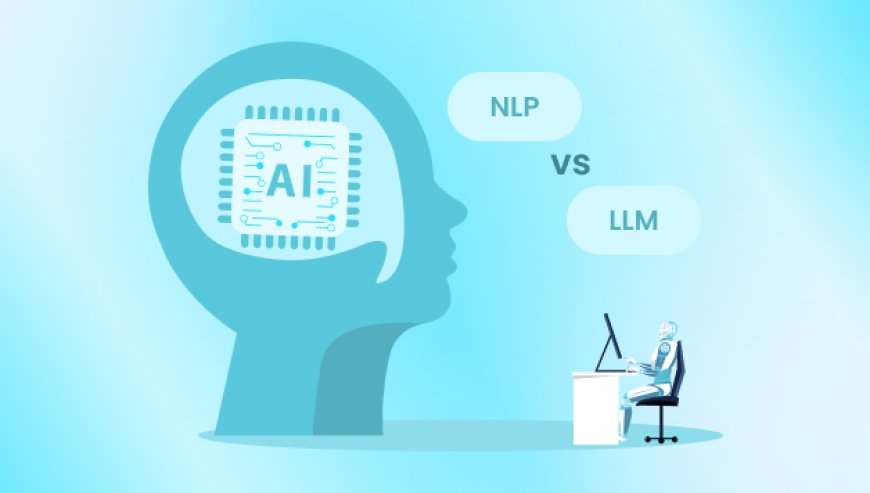How Do LLMs Power AI Tools and Platforms?
How do LLMs boost the power of modern AI tools? See how large language models are transforming platforms with real-time intelligence, automation, and smart responses.

The rise of artificial intelligence has introduced a wave of transformative technologiesamong them, large language models (LLMs) stand out as game changers. These models, trained on massive datasets and refined through advanced algorithms, are fueling a new generation of AI tools and platforms that can understand, interpret, and generate human language with incredible fluency.
But how exactly do LLMs work under the hood, and what makes them so essential in todays AI-powered solutions? Lets explore how LLMs power modern AI platforms, the most impactful LLM Applications, and why theyre central to shaping the future of intelligent software.
The Role of LLMs in AI Tools
At the core of most advanced AI tools is the ability to process and produce natural language. This is where large language models shine. Whether youre using a chatbot, summarizing a legal document, or generating code snippets, chances are an LLM is doing the heavy lifting behind the scenes.
LLMs such as GPT-4, PaLM, and Claude are designed to understand context, intent, and semantics. They dont just scan for keywordsthey grasp the meaning of entire sentences and paragraphs. This depth of understanding allows AI tools to provide more relevant answers, smoother conversations, and deeper insights than ever before.
This is particularly important when comparing NLP vs LLM. While natural language processing (NLP) encompasses a broader range of linguistic techniques, LLMs represent a specific, highly advanced method of applying NLP principles using deep learning. Unlike traditional NLP models that rely on rule-based or statistical methods, LLMs use neural networks to model language in ways that feel far more human-like.
How LLMs Work in Real-Time AI Platforms
Modern AI platforms rely on LLMs to power a wide variety of services in real time. Heres how they typically function:
-
Input Understanding: When a user enters a query, the LLM interprets the meaning, context, and tone.
-
Content Generation: Based on its training data and learned patterns, the model generates a relevant responsebe it a paragraph, a translation, or a data insight.
-
Continuous Learning: Many platforms fine-tune LLMs with user-specific or domain-specific data to make the output even more tailored and accurate.
Take tools like ChatGPT, Notion AI, or Jasperthese platforms harness LLMs not only to generate content but to personalize it, streamline workflows, and save time. This is no longer a futuristic concept; it's already integrated into everyday business tools and consumer apps.
Popular LLM Applications in 2025
The spectrum of LLM Applications continues to expand rapidly. In 2025, were seeing LLMs embedded across various industriesredefining how humans interact with machines. Here are some of the most popular applications:
-
Customer Support Automation: AI chatbots and virtual agents use LLMs to handle thousands of customer queries with natural-sounding responses and contextual awareness.
-
Content Creation: Writers, marketers, and educators use AI platforms powered by LLMs to create blogs, reports, and even video scripts in minutes.
-
Programming Assistance: Developers leverage tools like GitHub Copilot, which is driven by LLMs, to generate code, suggest fixes, and reduce repetitive work.
-
Healthcare Interpretation: From summarizing medical documents to drafting patient notes, LLMs help doctors save time and reduce errors.
-
Legal Analysis: Law firms are turning to LLMs to draft legal documents, summarize case files, and research regulations.
Each of these LLM Applications demonstrates how language models are not just theoreticaltheyre practical and deeply embedded in business functions.
Exploring Real-World LLM Use Cases
Beyond general applications, its important to dive into real-world LLM Use Cases to understand their full potential:
-
Recruitment Screening: HR platforms now use LLMs to scan resumes and match them to job descriptions. These models can interpret subtle skills, roles, and experience patterns that traditional software often misses.
-
Financial Reporting: Banks and financial institutions employ LLMs to auto-generate quarterly reports and investment summaries, significantly reducing manual effort.
-
E-Commerce Product Descriptions: Online retailers utilize LLMs to create SEO-friendly product listings and categorize items based on nuanced details.
These LLM Use Cases are growing not only in scope but in impact, helping teams reduce operational costs, improve quality, and deliver at scale.
Why AI Tools Rely on LLMs for Context and Creativity
One of the most important aspects of LLMs is their ability to offer both contextual awareness and creative outputs. This makes them incredibly valuable for businesses that want more than just automationthey want innovation.
Unlike basic automation tools that follow fixed rules, LLM-powered platforms can adapt to new topics, handle ambiguous queries, and generate novel ideas. This flexibility is a significant asset for industries like advertising, education, and even game development.
For businesses looking to integrate AI into their infrastructure, working with an experienced AI Development Company ensures that your AI tools are not just powered by the latest LLM technology but also fine-tuned for your unique goals.
Limitations and Responsible Use of LLMs
Despite their power, LLMs are not without limitations. They can sometimes hallucinate facts, misunderstand context, or carry inherent biases from their training data. Thats why developers and AI platforms must adopt ethical frameworks and include human oversight in high-stakes scenarios like healthcare or law.
Transparency, explainability, and data privacy must be at the forefront when integrating LLMs into any AI solution.
Conclusion: The Future Is Powered by Language Models
As we move further into the AI-driven era, large language models will continue to play a critical role in how we build, use, and interact with technology. From voice assistants to content generators, from business analytics to virtual agentsLLMs are the engines running behind the scenes.
Whether youre a startup looking to build a next-gen app or a corporation aiming to streamline operations, tapping into the right LLM Applications can bring significant advantages. The challenge now is not whether to adopt AI, but how to implement it smartly, with LLMs at the core.
The world is speaking more fluently with machines than ever before. And its the large language models that make this intelligent conversation possible.










































